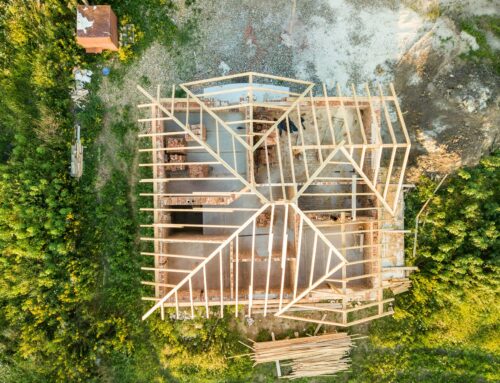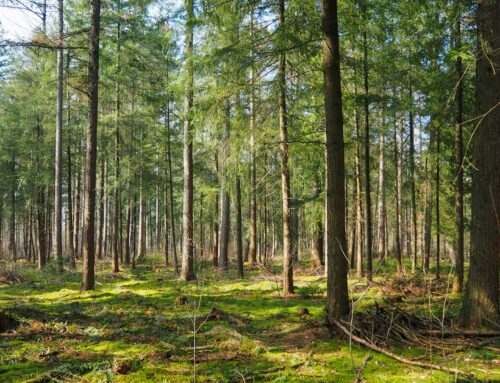Maintaining a healthy, vibrant landscape is of prime importance for homeowners in Fairfield and New Haven County, Connecticut. Sometimes, parts of this process can involve the removal of dead, dying, or fallen trees to protect the integrity of your property, preserve safety, and maintain an appealing environment. With over 8 years of professional experience, JNP Tree Removal, LLC is a trusted provider of high-quality tree removal services, helping customers throughout Connecticut manage their landscapes effectively. But what next after removing a dead or dying tree?
Following tree removal, choosing to plant new trees on your property can help restore its aesthetic appeal, support biodiversity, and promote environmental benefits. However, replanting after tree removal and stump grinding requires careful consideration and planning to ensure a smooth transition and sustainable landscape. In this blog post, we will delve into essential tips and guidelines for replanting trees on your property after a tree removal, covering topics such as choosing the right tree species, selecting the appropriate planting location, and understanding the fundamentals of tree care.
By learning the intricacies of replanting after tree removal, you will be better equipped to restore the beauty and balance of your landscape, paving the way for a brighter and healthier outdoor environment in Fairfield and New Haven County, Connecticut. Let’s work together to ensure the success of your tree replanting process and create a more thriving and resilient landscape for years to come.
Tree Replanting After Removal: A Guide for Fairfield and New Haven County Homeowners
1. Selecting the Right Tree Species for Your Landscape
Choosing an appropriate tree species to plant after removal can set the foundation for a thriving landscape. It’s essential to carefully consider your property’s conditions and how your desired species will interact with its environment. Here are some factors to take into account:
– Climate: Fairfield and New Haven County homeowners should select species suitable for the USDA Plant Hardiness Zone 6b, which means trees can withstand winter temperatures as low as -5°F to 0°F.
– Soil type: Different tree species will have varying preferences for soil moisture, drainage, pH levels, and nutrient availability. Perform soil tests and research species compatible with your soil conditions.
– Site limitations: Assess the available space for root growth, as well as the proximity of utility lines and nearby structures. Ensure that the mature tree will have adequate room for growth and not pose risks to infrastructure.
– Tree function: Consider the purpose of the newly planted tree, such as providing shade, screening unwanted views, creating habitat for wildlife, or adding visual interest.
2. Finding the Ideal Planting Location
The location where you plant your new tree holds significant importance for its growth and health. Here are some recommendations for finding a suitable planting location after tree removal and stump grinding:
– Avoid replanting in the exact same spot: Although tempting, it’s not advisable to plant your new tree in the precise location of the removed one. The surrounding soil may be compacted, depleted of nutrients, or contain leftover roots, negatively impacting the new tree’s growth.
– Consider sun exposure: Most tree species require ample sunlight for optimal growth and health. Ensure that your selected planting location receives sufficient sunlight throughout the day, taking into account the shade cast by buildings or other trees.
– Assess drainage: Poorly drained soil can lead to root rot or other issues, while overly dry conditions may result in stress for the new tree. Observe the area after a rainfall to gauge water drainage and adjust your planting site accordingly.
3. Understanding the Fundamentals of Tree Planting and Care
After selecting the right tree species and location, it’s crucial to follow best practices when planting and caring for your new tree. Equip yourself with the basic knowledge and techniques required for successful tree planting and care:
– Plant at the right depth: Planting your tree too deep can stress the roots, while planting too shallowly can lead to instability. Aim to plant the tree at the same depth as it was in its container or, if it’s a bare-root tree, at the depth of the root flare.
– Amend the soil if needed: If soil tests reveal deficiencies in nutrient content or a lack of organic matter, consider making soil amendments. Adding organic material like compost, for example, can be beneficial for both soil structure and nutrient availability.
– Water regularly: Newly planted trees require consistent watering to establish their root systems. Ensure your new tree receives consistent moisture, taking care not to overwater and cause root suffocation or fungal issues.
– Proper pruning: To promote a healthy tree structure and prevent future issues, prune your tree during its dormancy. Remove broken, rubbing, or narrow-angled branches to promote better airflow and reduce potential hazards.
4. Enlisting the Help of Tree Care Professionals
Replanting after tree removal and stump grinding may be overwhelming for some homeowners, requiring extensive knowledge and labor. Collaborating with skilled tree care professionals can help alleviate concerns, providing expert guidance and assistance throughout the entire replanting process:
– Species selection: Tree care professionals can recommend appropriate tree species for your landscape, taking into consideration factors such as climate, soil type, and desired tree functions.
– Planting and care: With their vast experience, tree care professionals can correctly plant and maintain your new tree, ensuring that it has the best possible chance of establishing itself successfully.
– Ongoing maintenance: As your new tree grows, tree care professionals can perform periodic evaluations and maintenance tasks, such as pruning or insect/disease management, to ensure its continued health.
Conclusion
Choosing to replant following tree removal in Fairfield and New Haven County, Connecticut, can help restore balance to your landscape and contribute to a healthy, diverse ecosystem. By considering factors such as tree species selection, planting location, and proper tree care techniques, homeowners can successfully integrate new trees into their landscapes.
Enlisting the help of dedicated tree care professionals, such as the team at JNP Tree Removal, LLC, can ensure a seamless and stress-free replanting experience. Our vast knowledge and commitment to excellence will support homeowners throughout the entire replanting process, ensuring the vitality and beauty of your landscape for years to come. Schedule a Connecticut tree service today!




